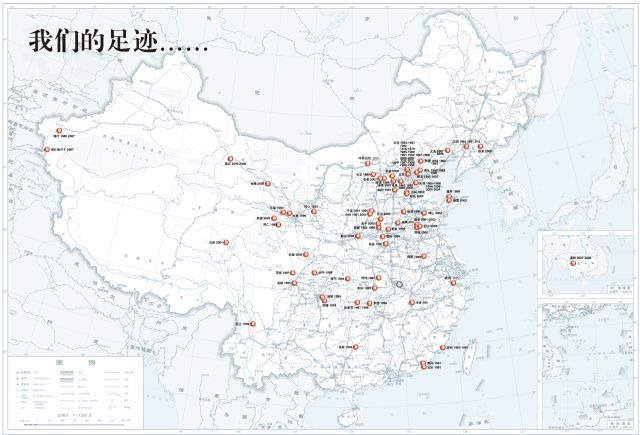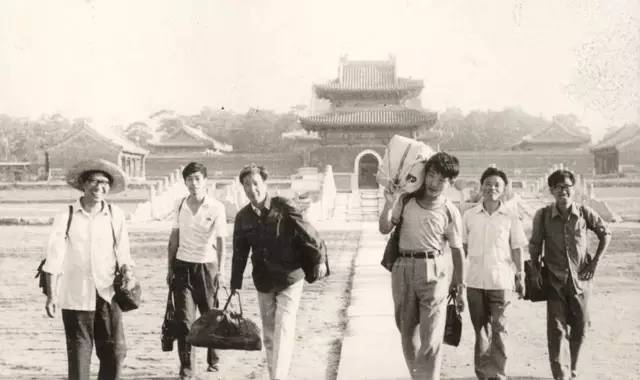Ancient architecture surveying and measuring is a compulsory course for domestic college students majoring in architecture. It plays a very important role in the protection of architectural relics. As a key scientific research base of the State Administration of Cultural Heritage, Tianjin University excels in ancient architecture surveying and measuring and its work has been put into the national heritage conservation archive. Starting in 1941, teachers and students in the Architecture School of Tianjin University have carried out ancient architectural surveying and measuring for 76 years and preserved more than 2000 paper drawing files and tens of thousands of digital files.
Many national key cultural relics’ protection units have been mapped by Tianjin University students, including the Imperial Summer Resort, the Imperial Palace, the Summer Palace, Beihai, Tiantan, Ancestral Temple, Qing Dongling and Xiling. Zhang Fengwu, a professor in the Architecture School of Tianjin University said, “Each year, we choose our mapping projects according to the needs of relics protection to avoid repeated work. Students are required to follow precise and scientific criteria to make sure all the mapping results can help architecture protection.” To educate students based on practical demands may be the best answer to the university motto of seeking truth from facts.

The places TJU teachers and students have been to for Ancient Architecture Surveying and Measuring
Looking for the Root of Chinese Architecture
Prof. Wang Qiheng entered Tianjin University as a postgraduate student in 1982. Since then, he has devoted himself wholeheartedly to ancient architecture surveying and measuring for 30 years. “In the past years, we have measured the Imperial Palace, the Summer Palace, the Imperial Summer Resort, etc. Students must actually climb onto the building by ladders or ropes to get a close touch with the ancient buildings. It is a process where they speak with the ancient Master Architects about the root of Chinese architecture. That’s the real architectural education with Chinese characteristics.” Said Professor Wang. At the age of 70, he still works on the spot of ancient architecture mapping, setting up ladders for climbing, fixing safety ropes for students, and preparing the air cushion bed for protection. He asks students to follow four steps during the mapping practice, namely, climbing the architecture, drawing sketches according to the data, converting the sketches into computer mappings, and eventually developing an ardent passion for ancient architecture mapping.
According to Professor Wang, ancient architecture mapping sets a bond between students and ancient architecture. He believes that architects graduating from Tianjin University would never harm ancient buildings. That’s the aim of the course and what makes the old professor extremely proud.
Cui Kai, the Academician of Chinese Academy of Engineering who graduated from the Architecture School of Tianjin University acknowledged the influence the ancient architecture surveying and measuring course had on him. He said that “The course bestowed me with a special feeling toward Chinese historical buildings which affected my later architectural work. Books and drawing sheets alone cannot tell us the true meaning of architecture. Only when we are in the wild, communicating with the old buildings day and night can we be enlightened and engrave that kind of perception into our heart and soul.”

Wang Qifeng led students to measure the Western Tombs of the Qing Dynasty (The 3rd from the left is Wang Qiheng, and the 4th is Cui Kai.)

Cui Kai’s drawing
Racing against Time to Save Cultural Relics
Drawing files prove to be very important materials in cultural relics protection, concerning the world culture heritage application and the renovation and preservation of ancient buildings. “We helped the Western and Eastern Royal Tombs of the Qing Dynasty apply for World Cultural Heritage by providing their measured drawings. And in building renovation, a map or drawing of the building should be provided in the first place so that people can mark the damaged part on it. In a word, measured drawings are the foundation for building protection and innovation,” Professor Zhang Fengwu explained.

A student at work by climbing up a ladder
It is reported that by 2016 there were almost 760,000 unmovable historical relics in China and among them 4295 are listed as major national historical and cultural protection sites, 1882 sites being the ancient architectures. Most of the cultural relics lack sound measured drawings. Consequently, for a long time, measured drawings of cultural relics will be a tough task considering that only few of the 123 domestic universities that have an architecture school have the ability to carry out ancient architecture surveying and measuring work, lagging far behind the demands.
Having rich experience in ancient architectural surveying and measuring, Tianjin University undertook the task of writing the book named Ancient Architectural Drawing Regulations that explains the standard process and methods of ancient architecture surveying and measuring.

The mapping of Fo Xiangge in the Summer Palace
As Liang Sicheng, a Master Architect in Modern China once said, ancient architectural surveying and measuring was urgent and necessary since many ancient buildings were in danger of destruction as time passed. Teachers and students in Architect School of Tianjin University are racing against time to produce more ancient architecture drawings that help ensure the culture relics survive longer in history.
By Du Baohui & Xie Huang
Editors: Yin Wei & Doris Harrington






